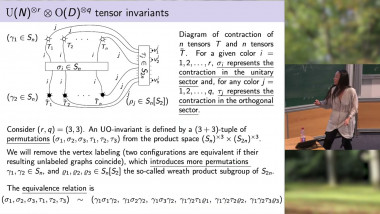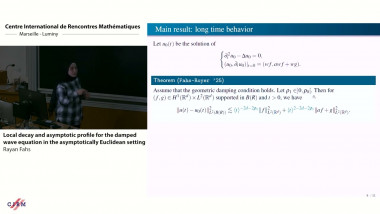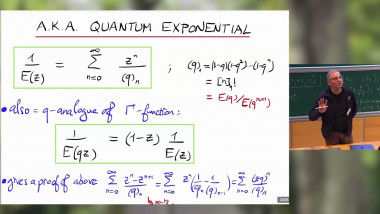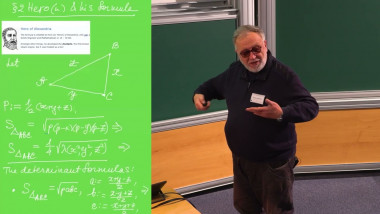Appears in collection : 4th Itzykson Colloquium - Moduli Spaces and Quantum Curves
The topological recursion (TR) is a recursive algorithm, which associates to a plane complex curve (here called a “spectral curve”) $S$, an infinite family of symmetric meromorphic differential n-forms $W_{g,n}(S)$, called the “invariants” of the curve $S$. For example on a plane curve given by its equation $P(x,y)=0$, the first invariants are $W_{0,1}(S)=ydx$, the invariant $W_{0,2}(S)$ is (related to) the heat kernel on the curve, $W_{0,0}(S)$ is the prepotential, $W_{1,0}(S)$ is the logarithm of the (regularized) determinant of the Laplacian on the curve, and higher invariants $W_{g,n}(S)$ are then computed by recursion...
We will start by illustrating these objects on a simple elementary example: Mirzakhani's recursion relation among hyperbolic volumes of moduli spaces.
Then, we will show that the recursive structure of TR is well represented graphically. This allows to represent the invariants as graphs made of elementary building blocks, in a similar way to the so called “Givental formalism”. The building blocks can be related to intersection numbers of moduli spaces of curves. This establishes a link between topological recursion and moduli spaces, and leads to many beautiful applications, like the ELSV formula (see Zvonkine's talk).
Finally, we will explain the link with integrable systems: namely, how the TR invariants recover the Tau-function and the Baker-Akhiezer functions of integrable systems. This aspect will be illustrated on the (conjectured) example of the Jones polynomials of knots.
Plan:
1) one example: Mirzakhani's recursion
2) the general topological recursion
3) the origin of TR in Matrix Models
4) expansion into graphs, and Givental-like formalism
5) moduli spaces
6) integrability, knots, Jones polynomials.
















